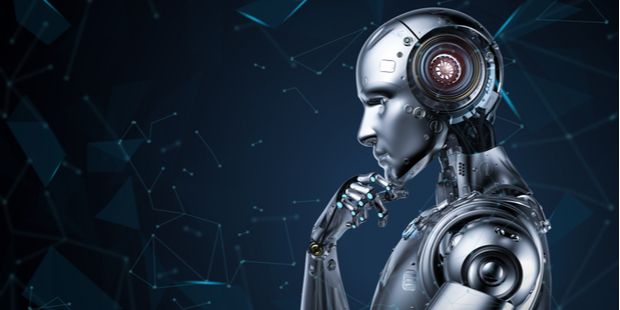It’s readily apparent that artificial intelligence (AI) has advanced significantly when we look back on 2022. We’ve reached some milestones, including improvements in the commercial adoption of AI and advances in computer vision and natural language processing.
There is little doubt that AI will continue to advance rapidly through 2023. However, given the speed of change, it’s critical to distinguish vital developments from pointless trends.
In this article, we intend to discuss the different aspects of AI to better grasp the key trends in AI better. What better way to demonstrate this than by asking AI software about the 2023 AI developments it’s excited about? We are in the era of human-machine collaboration.
What is Artificial Intelligence?
A broad field of computer science called artificial intelligence (AI) is devoted to creating intelligent machines that can carry out actions traditionally associated with human intelligence. The advancements in machine learning and deep learning are driving a disruptive shift across almost every aspect of the technology industry, even though AI incorporates various interdisciplinary techniques.
AI allows computers to mimic and, in some situations, even improve human cognitive abilities. AI is increasingly becoming a part of our daily lives, from the development of driverless vehicles to the widespread use of generative AI tools like ChatGPT and Google’s Bard. Businesses across all industries are increasing their investments in AI technology due to this integration.
AI and ML are among the most sought-after skills in the job market. an AI and Machine Learning course can significantly contribute to building a great career. With the abilities you gain from completing an AI and ML course, you become a significant asset to prospective companies.
Top Artificial Intelligence Trends to Follow in 2023
Rise of augmented analytics :Augmented analytics using machine learning (ML) and natural language processing (NLP) leverages AI techniques to improve data production and insight development Improves traditional data insights across industries and will drive AI dramatically by 2023. According to Gartner Using augmented analytics to create the ability to gain deeper insights and identify and automate the necessary changes through this culture-based data is possible.
Personal and generative AI:
Through extensive use of ChatGPT 3, the researchers discovered the power of large-scale language models and their role in real-world, hands-free handwriting of relevant marketing information. The increase in hyper-personalization for AI is another notable emerging trend. AI will use the latest developments in deep neural networks and advances in audio, video, and image processing to create brand messages tailored to the customer’s unique online persona. This trend could have a significant impact on the e-commerce and entertainment industries.
Edge A.I
Edge AI, the combination of edge computing and AI, represents cutting-edge computing technology and takes data analytics everywhere. Edge computing enables real-time processing, bringing analysis closer to the data source. Despite its young age, Edge AI projects a market size of more than $3 billion by 2027. As Internet of Things (IoT) devices evolve, this technology gains momentum because it reduces energy consumption largely through local analysis and deals with privacy issues caused by external sources offloading to be delivered.
Cybersecurity AI
The average data breach cost in the United States in 2022 was $9.44 million. Over 67% of small organizations faced several security breaches, according to the 2022 Electric Cybersecurity study, which may be influencing AI developments in cybersecurity for the following year. Since 51% of knowledge workers work remotely, AI will be crucial in monitoring personnel. Advanced surveillance systems will also make integrating servers, network devices, and software easier while providing cloud-based services, preemptive threat detection, and real-time staff monitoring.
Low-Code/No-Code Artificial Intelligence
According to Gartner, by 2026, 80% of all new users in the no-code area will be using low-code AI optimization. This shift toward increased non-technical participation in AI promises to democratize its use across different industries and enterprises of all sizes. Project managers may streamline intricate data analysis and visualization procedures while doing AI optimization thanks to no-code platforms like Sway AI. There will be a huge decrease in dependency on IT development and support staff after 50% of medium-to-large firms adopt low-code development
AI will help in structuring data
The trend of transforming unstructured data into structured representations through machine learning and natural language processing will continue to rise in the near future. Organizations will use these technologies to produce data suitable for RPA when automating transactional operations. Despite being hampered by its reliance on structured data, RPA is a rapidly growing field within the software industry. AI plays a crucial role in closing this gap by converting unstructured data into organized formats and providing precise results.
Hyper-Automation
Hyper-automation is the pinnacle of the automation of traditional business processes. Driven by cutting-edge techniques like RPA (robotic process automation), EPA (event-driven architecture), machine learning, packaged software, and more, this smooth digital transformation journey will become the norm.
AI (Artificial Intelligence) Ops become more popular
As IT systems get more complicated, AIOps is becoming increasingly popular. According to Forrester, platform solutions that integrate many monitoring disciplines, such as application, infrastructure, and networking, are becoming more popular in the market. AIOps solutions help IT operations and other teams make better decisions, optimize procedures, and effectively handle the influx of data by boosting data analytic skills. Forrester advises IT leaders to look for AIOps providers that foster cross-team cooperation through end-to-end digital experiences, data correlation, and seamless integration of IT operations management technologies.
The AI world is still changing quickly in 2023. These developments highlight the continued influence of artificial intelligence across industries, from Edge AI reinventing data analysis to no-code AI democratizing its use. Gaining full use of AI requires staying educated.
There is a strong demand for experts in AI and ML, which are among the fastest-growing technologies. You can gain the skills in demand by numerous industries, such as healthcare, banking, e-commerce, and more, by completing an AI and Machine Learning course from an industry-recognized institution.




